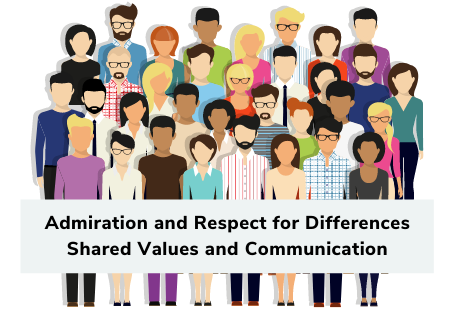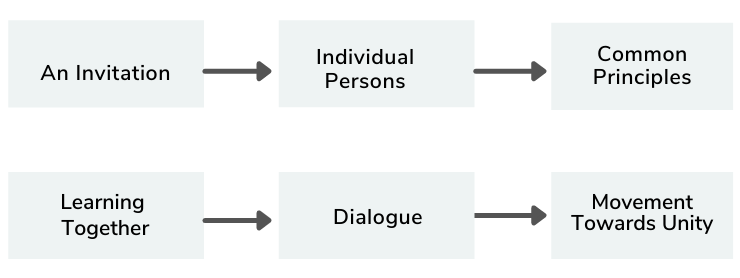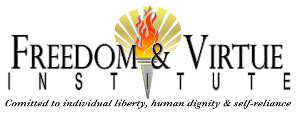Commonality Training
Interested in Commonality Training?
Great, You’re in the right place!
If you have your password, you can access our training videos by scrolling down
toward the end of this page. If not, read on to learn about the training.

Commonality: A New Approach to Diversity Training
While diversity training is nearly universal, inadequate attention has been paid to its philosophical rigor and practical effectiveness. Are its ideas sound? Does it work? Asking these questions has led us to develop a new approach to promoting collaboration and understanding among groups of diverse people. We invite you to explore our method and join us in cultivating a new way of doing diversity.
The Need for Commonality Training
Americans widely recognize that diversity and inclusion are important. Companies, universities, and other institutions have invested billions of dollars in programs and personnel designed to attract and retain a diverse workforce, foster toleration and understanding, and promote teambuilding.
Yet it’s not clear that this investment has paid off. While difference can be productive and enriching, it can also cause friction and conflict. Employees report widespread dissatisfaction with diversity training, and, remarkably, some places find that such training has aggravated rather than easing workplace tensions. More broadly, Americans continue to segregate by race, but political affiliation and cultural views are overtaking older causes of division. Polling finds that respondents persist in pessimistic attitudes about the possibility of greater unity. It appears that Americans of different backgrounds and viewpoints are increasingly unlikely to have fruitful interactions—or even to interact at all.[1]
The causes of these phenomena are doubtless many and varied, but meanwhile it seems reasonable to question conventional approaches to meeting the challenge of diversity. Rather than devoting increasing resources to methods whose outcomes have not been demonstrably positive, institutions will be better served by reorienting their diversity programs around a better set of principles, with expectation of a better set of outcomes. We call this approach “Commonality Training.”
The Problem with Diversity Training
High-profile lawsuits affected major corporations in the 1990s and 2000s, and corporations reacted by implementing training in diversity. Almost all Fortune 500 companies offer diversity training to their staff. Many have diversity and inclusion departments dedicated to the task. Yet, appreciation for each other and respect remain elusive. This type of training often promises what it cannot deliver.
An article in Harvard Business Review reviewed the evidence:
“Do people who undergo training usually shed their biases? Researchers have been examining that question since before World War II, in nearly a thousand studies. It turns out that while people are easily taught to respond correctly to a questionnaire about bias, they soon forget the right answers. The positive effects of diversity training rarely last beyond a day or two, and a number of studies suggest that it can activate bias or spark a backlash. Nonetheless, nearly half of midsize companies use it, as do nearly all the Fortune 500.”[2]
The explanations usually given for this failure to accomplish progress are poor implementation, employee resistance, the culture as a whole, or lack of will on the part of the business community. There is some merit in these explanations, but we believe the character of the diversity training itself should also come under scrutiny.
There is a fundamental error at the heart of most diversity training: a focus on diversity. Diversity is a fact, one that is obvious and that everyone recognizes. Learning about the viewpoints, cultures, and backgrounds of others can be valuable in various ways. But training that focuses on diversity is training that emphasizes difference. Information about differences does not automatically induce appreciation or respect for others; it can be counterproductive, leading to increased parochialism and tribalism.
If the aim is cooperation and mutual understanding, what is needed is a focus on commonality. Despite our differences, which are many and evident, we also have much in common, including a common purpose in this endeavor (school, business, organization). What is more, what we have in common is more fundamental and essential than our differences. What unites us is more important than what divides us!
Additionally, many diversity and inclusion programs seek to achieve a false unity by imposing conformity. This approach does not persuade members of the community to cooperate by making rational arguments for common interests and purposes, but instead cows and shames certain members into suppressing any opinions that dissent from those that are officially permitted. In some cases, it even means coercing trainees to accept moral or political viewpoints with which they disagree and which are irrelevant to ensuring the fruitful cooperation of a diverse workforce.
What is needed instead is the articulation of a common ground that can be occupied by all community members, regardless of their political, religious, or personal identifications. This common ground is the humanity of all people. Conformity to a broad range of ideological propositions is not feasible and is unnecessarily polarizing—again, counterproductive to the goal of understanding and cooperation.
The Basics of Commonality Training
Our training begins with a bedrock principle: the inherent dignity of every human person. It asks trainees to see that, while cultural, social, and economic differences are important and influential, they are not the core reality of the person. The essential nature of each human being is personhood—all those qualities that make a human person what he or she is and that all human persons hold in common. Every person is unique, unrepeatable, and irreplaceable. Every person possesses human capacities and aspirations such as truth, goodness, beauty, and love. These qualities, inherent to the human condition, bestow dignity on everyone, carrying with it a twofold mandate: a demand that we be respected and an obligation that we respect others.
On this basis, our interaction with others should be characterized not by prejudice—which “pre-judges” the other based on superficial observations—but by suspending judgment, listening, and trying to benefit from insights the other may have.
Commonality training is an invitation for all to encounter others on the common ground of a shared humanity, a respect for the dignity of the other. It does not try to enforce unity that is not genuinely embraced but instead strives to facilitate the recognition of truths that are accessible to all but need to be brought to the surface.
Our training thus revolves around the concepts of individual uniqueness and human commonality, avoiding the polarizing “us versus them” approach that sees people as groups with competing interests.
Moving from the starting point of the nature of the human person, we begin to build systems and institutional frameworks that foster positive human interaction.

Training should always be conceived as a starting point ignited by trainers who understand their limitations, have clarity about their subsidiary role, and reject any protagonism or “savior complex.” They are there to facilitate and to assist in creating a healthy environment.
Through decades of work with diverse populations, we have identified certain foundational ideas and universal human traits (human goods) that need to be highlighted and developed positively by an emphasis on habits that strengthen them. These habits are known as the virtues. (See, for example, Virtues Work by Alexander Cummings.) Moreover, we have benefited from the research of scholars who have identified a set of interpersonal and intragroup skills and strategies that support positive dialogue, encounter, and the possibility of giving others the benefit of the doubt. This means members of an organization can reach a point of empathy and closeness that has as its first response a willingness to see the other in a positive light.
We understand that our approach to training is different and can even feel formidable, as it might seem to run against the target of group identity that others stress. The invitation to encounter the other is a springboard to further exploration. Given the urgency of this work in the face of an increasingly polarized society, we hope that our invitation/training gives you the confidence and tools to take an important first step toward overcoming divisions and fostering an environment of love, respect, and reconciliation.
Who can benefit from Commonality Training?
Large corporations
Small and mid-size businesses
Schools
Churches
Ministries
Commonality Training can be beneficial for any type of for-profit or not-for profit corporation.
Summary of Commonality Training
Commonality Training is an interactive presentation that offers a vision of cohesion in the working place based on universal principles of human dignity as the foundation for the creation of an environment that ultimately has appreciation for difference as a component.
The training is seen as the beginning of building a community where one component is crucial: We give each other the benefit of the doubt.
To accomplish this we do not focus primarily on the following components:
- Group identity or cultural differences
- Questionnaires to uncover implicit bias
- Controversial theories and intellectual conformity
- Concepts such as “privilege” or “whiteness”
- Recruitment of employees as activists in any movement
- Helping companies to check a box to show proper attitudes
Instead, we want to foster an environment where people take seriously what it means to be authentically human and how to embrace the humanity of the other not as a specimen of a group but as an unique and unrepeatable person with the right to be treated as such.
We emphasize three universals:
1. Human Dignity (absolute universal)
2. The mission and vision of the specific organization (practical and narrow
universal)
3. The virtues
[1] A 2021 survey conducted by the University of Southern California Annenberg School for Communication and Journalism showed that only 28% of respondents express that their willingness to listen to different points of view will increase in the future, while a mere 18% stated their empathy towards people who disagree with them will grow in the years to come. “USC Annenberg Study and Livestream: Polarization of America Will Likely Increase Despite Calls for National Unity,” January 14, 2021.
See also Charles A. Murray, Coming Apart: The State of White America, 1960–2010 (New York: Crown Forum, 2013); and Bill Bishop, The Big Sort: Why the Clustering of Like-Minded America Is Tearing Us Apart (Boston: Mariner, 2009). Even critics who have taken issue with Bishop’s geographical segregation thesis concede that “subgroups of Americans are becoming more like-minded, that they are becoming increasingly ideologically inbred, and that they have difficulty comprehending people unlike them.” Samuel J. Adams and Morris P. Fiorina, “The Myth of the ‘Big Sort,’” Hoover Digest no. 3 (August 13, 2012).
[2] Frank Dobbin and Alexandra Kalev. “Why Diversity Programs Fail and What Works Better.” Harvard Business Review. July-August, 2016, pp.52–60. See Janice Asare Graham, “Five Reasons Why Diversity Programs Fail,” Forbes. May 31, 2019; Glenn Llopis, “Five Reasons Why Diversity and Inclusion Fails.” Forbes, January 16, 2017; Hoa Nguyen, “Diversity Training Doesn’t Work. And Don’t Bother Fixing It.” Medium.com. October 6, 2020; Elizabeth Levy Paluck and Donald P. Green, “Prejudice Reduction: What Works? A Review and Assessment of Research and Practice,” Annual Review of Psychology 60 (2009): 339–67.
Commonality Training Videos
Welcome to the premium content portal. Enter your password to get started!
Part One
Part Two


